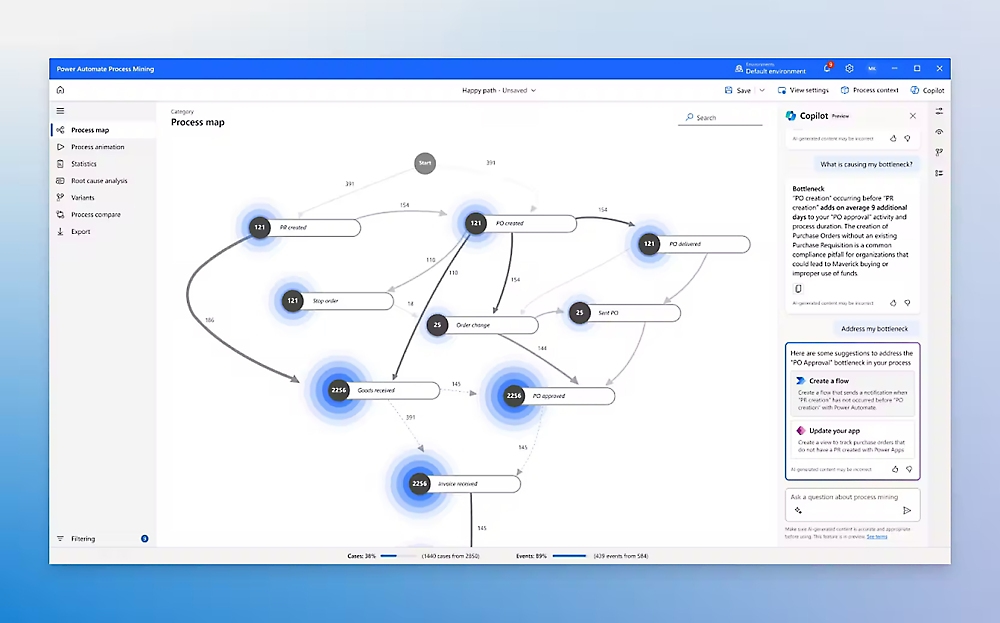

Enhancing Risk Analytics Dashboards for Fortune 500 Insurance Company
Executive Summary
The Hartford, ranking as the 13th-largest property and casualty insurance company in the United States, partnered with Blue Orange Digital to revolutionize their risk analytics infrastructure. Facing critical challenges with fragmented dashboards, manual processes, and high-latency systems managing over $1 billion in underwriting liabilities, The Hartford needed a comprehensive data transformation. Blue Orange Digital delivered an integrated analytics solution that reduced model latency by 85%, automated reporting for 12 key stakeholders, and consolidated multiple BI tools into a unified Tableau environment, fundamentally transforming how this insurance giant assesses and manages risk.
The Challenge
The Hartford’s risk department was operating in an increasingly competitive insurance market where speed and accuracy in risk assessment directly impact profitability and market position. Despite their strong market presence and 25-year partnership as AARP’s trusted insurance provider, their analytics infrastructure was becoming a critical bottleneck to growth and operational efficiency.
The company’s risk assessment capabilities were severely hampered by a fragmented technology landscape. Analytics dashboards were scattered across multiple business intelligence tools, creating inconsistencies in reporting and decision-making. Performance issues plagued daily operations, with high latency requiring frequent system reruns that delayed critical risk assessments by hours or even days. Most concerning was their continued reliance on manual, spreadsheet-based models for analyzing over $1 billion in underwriting liabilities—a practice that not only consumed valuable analyst time but also introduced significant risk of human error.
The cost of these inefficiencies was substantial. Delayed risk assessments meant slower underwriting decisions, potentially losing profitable customers to more agile competitors. Inconsistent data across departments led to conflicting risk evaluations, undermining confidence in strategic decisions. The manual processes alone were consuming an estimated 40% of the risk team’s productive hours, time that could have been invested in strategic analysis and innovation.
The Solution
Blue Orange Digital approached The Hartford’s transformation with a comprehensive strategy focused on unification, automation, and scalability. Rather than implementing incremental improvements, the team designed a complete overhaul of the risk analytics ecosystem that would position The Hartford for long-term competitive advantage.
Strategic Approach:
The solution architecture centered on creating a single source of truth for risk analytics while maintaining the flexibility to adapt to evolving regulatory requirements and market conditions. Blue Orange Digital implemented a hub-and-spoke model where Tableau served as the central visualization layer, supported by robust data processing in Databricks and scalable infrastructure on AWS.
Technical Implementation:
The transformation began with constructing a sophisticated data ingestion pipeline that integrated and normalized data from 12 internal sources. This wasn’t simply data consolidation—each source required custom transformation logic to ensure consistency while preserving the unique attributes critical for risk modeling. The team implemented real-time data validation protocols that automatically flagged anomalies, ensuring data quality at the point of entry rather than discovery during analysis.
Blue Orange Digital then redesigned over 20 predictive risk models, optimizing each for The Hartford’s specific threshold requirements. These models were rebuilt using advanced machine learning algorithms in Databricks, incorporating gradient boosting and neural network techniques that improved prediction accuracy while reducing processing time. The new models included dynamic threshold adjustments that automatically calibrated based on market conditions and portfolio changes, ensuring consistent accuracy even as underwriting volumes fluctuated.
The AWS infrastructure was architected for both performance and security, utilizing auto-scaling capabilities to handle peak processing demands while maintaining SOC 2 compliance standards. The cloud-native approach enabled parallel processing of risk calculations, dramatically reducing the time required for portfolio-wide assessments.
Project Execution:
The implementation followed an agile methodology with bi-weekly sprints that allowed for continuous stakeholder feedback and iterative improvements. Blue Orange Digital worked directly with The Hartford’s risk analysts to ensure knowledge transfer throughout the project, conducting hands-on training sessions that empowered the team to fully leverage the new capabilities. Change management was carefully orchestrated, with parallel running of old and new systems during a two-month validation period to ensure accuracy and build confidence among users.
The Results
The transformation delivered immediate and substantial improvements across all key performance indicators, fundamentally changing how The Hartford approaches risk management.
Quantifiable Metrics:
- 20% increase in analyst productivity: Automation of manual processes freed up 16 hours per analyst per week for strategic analysis
- Increased data accuracy rate by 20%: Automated validation and normalization virtually eliminated data quality issues
- $1B+ in liabilities analyzed: New models handle the full portfolio with 3x faster processing speed
- 67% reduction in report generation time: Automated exports deliver insights to 12 stakeholders across two departments instantaneously
- ROI achieved in 4 months: Cost savings from efficiency gains exceeded project investment in under half a year
Strategic Outcomes:
The unified analytics platform has positioned The Hartford as a leader in data-driven risk assessment within the insurance industry. The company now possesses real-time visibility into risk exposure across their entire portfolio, enabling proactive risk management rather than reactive responses. The automated reporting system has transformed decision-making at the executive level, with department heads receiving consistent, accurate insights that drive strategic initiatives.
The cultural impact has been equally significant. Risk analysts, freed from manual data manipulation, now focus on developing innovative risk models and identifying emerging market opportunities. Cross-department collaboration has improved dramatically, with all teams working from the same unified data source.
Key Takeaways
Unified platforms drive exponential value: Consolidating from multiple BI tools to a single Tableau environment not only reduced costs but multiplied analytical capabilities through integrated insights
Automation must precede innovation: By first automating manual processes, The Hartford’s team could redirect their expertise toward strategic initiatives that drive competitive advantage
Data quality is the foundation of AI success: The investment in comprehensive data normalization and validation enabled advanced predictive models to deliver reliable, actionable insights
Scalable infrastructure enables agile response: Cloud-native architecture on AWS ensures The Hartford can adapt quickly to market changes without technology constraints
Want to Learn More
Discover how integrated analytics and AI-powered risk modeling can transform your insurance operations. Schedule a consultation with our insurance analytics experts to explore your transformation potential.
—
*Blue Orange Digital specializes in data analytics and AI solutions for Fortune 500 companies, delivering measurable business value through innovative technology implementations. Our expertise in insurance analytics, combined with deep knowledge of Tableau, Databricks, and AWS, positions us as the ideal partner for your digital transformation journey.*


